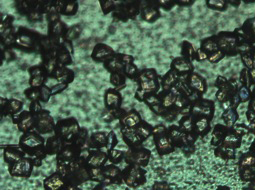
Continuous pharmaceutical manufacturing poses a unique opportunity for the industry. It would enable the use of fast and exothermic chemistries, produce high yields, and reduce energy costs. It has the potential to greatly enhance the controlability and reproducibility of product quality.

This enhanced reproducibility is shown in the research of Dr. Richard Braatz of the Massachusetts Institute of Technology. Using a continuous process he was able to create crystals of uniform sizes, to a degree unachievable by batch manufacturing.
In his presentation, "Looking to the Future in Continuous Pharmaceutical Manufacuring," Braatz reviewed and commented on the application of quality by design methodologies to continuous pharmaceutical manufacturing. One of the key methods that Braatz discussed is the generation of design spaces. A design space is a multi-dimensional space that encompasses combinations of product design, manufacturing process parameters, and raw material quality that provide assurance of suitable quality and performance.


